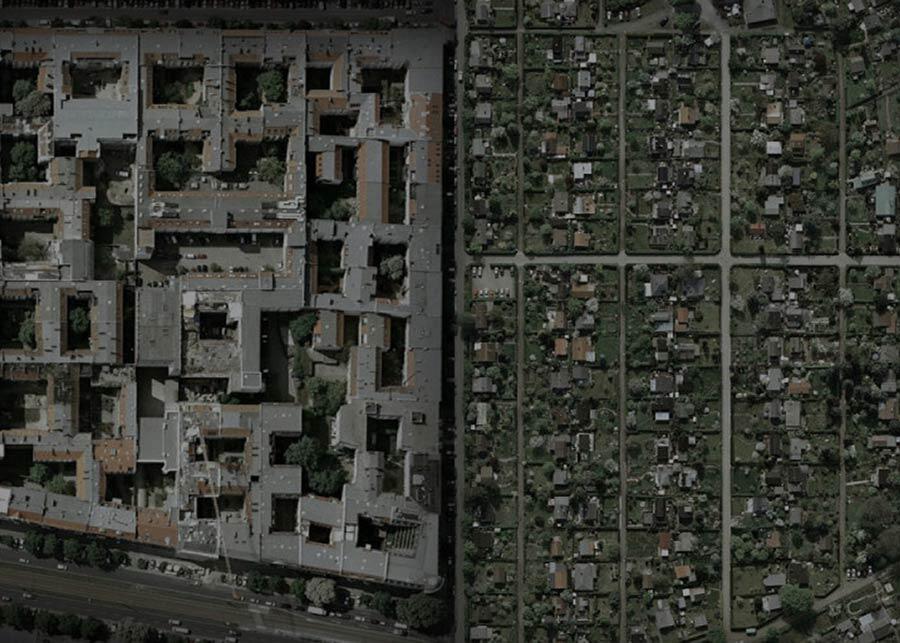
Instructor:
Course: Reconceptualizing the Urban: Berlin as Laboratory
Students: Mikela de Tchaves
In European cities, the nineteenth century represented the period of vast urbanization, great overcrowding, and the worst housing conditions. Industrialization and migration from the countryside into the cities gave rise to a new, thick working class that had to be accommodated in the city. These unprecedented demographic shifts had a huge impact on the physical transformation of Berlin, triggering the birth and propagation of two very urban phenomena: the tenement house (Mietskaserne) and the allotment garden (Kleingarten). Both were originally unplanned and later formalized to create two particular Berlin typologies that became the DNA of built and open (rental) space in Berlin. Developing at the same time, in a dialectic relationship, the Mietskaserne and the Kleingarten fulfilled the needs of a growing proletariat and shaped the character of Berlin. By tracing their history and the conditions of how they came to be, this research intends to reveal the hidden world behind their gates and its potential of creating a new urban condition today by reinventing themselves to accommodate the needs of the ever changing socio-economic environment of Berlin.
The nineteenth century tenement block and garden colony have transcended time and provided the city with the opportunity to return to a lost sense of urbanity while offering open spaces for production and social interaction. Openness and co-existence remain an essential part of Berlin’s urban condition that can be pursued even further through the reinvention of these two urban typologies. Their flexibility and adaptation to the needs of the city throughout centuries have proven their importance as urban tools that can serve to develop new forms of citymaking, especially in cities like Berlin that undergo constant transformations.
Amidst a refugee crisis that is starting to shift and reconfigure populations all over the world, and especially in Germany, can the gardens provide the food security and shelter for the displaced population in the way they were once conceived? Can the productive cores of the blocks start to engage more actively locals and floating populations in economic, social or cultural activities that can manifest the integrational role that these courtyards once had? Can these two spaces, seemingly sealed from the public and especially from outsiders, open their gates and provide an alternative urban paradigm for the current shifting conditions of the city? Could they even be combined and brought closer to each other, in a form of a socially encompassing urban courtyard that can also serve as a garden where new and old residents have the chance to interact?



